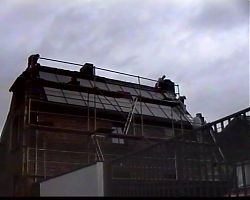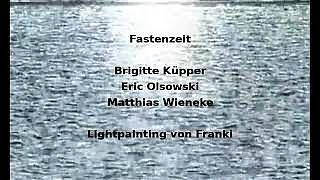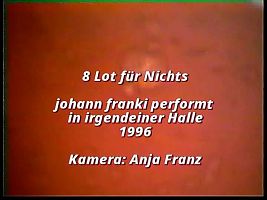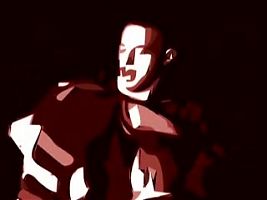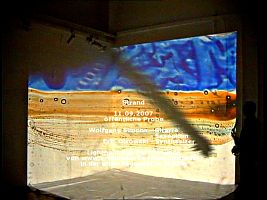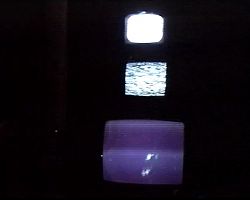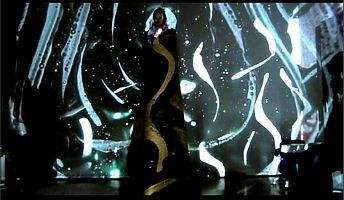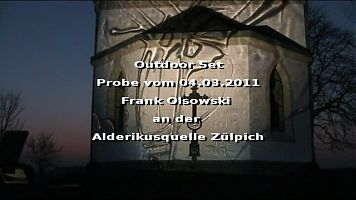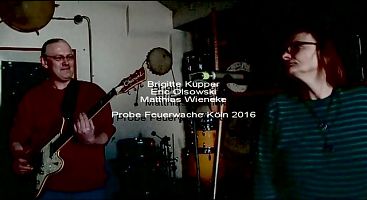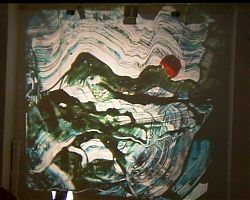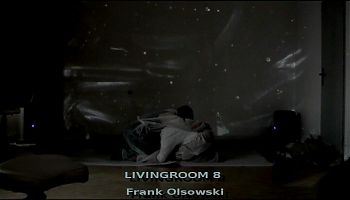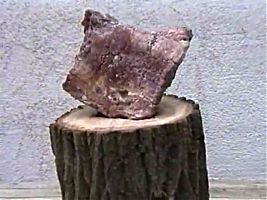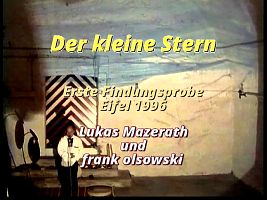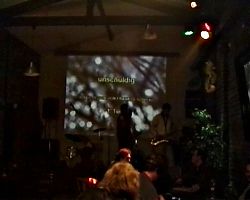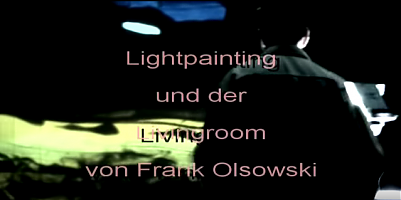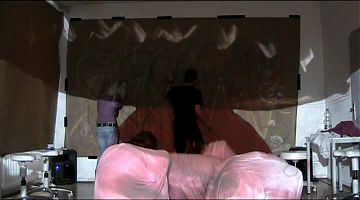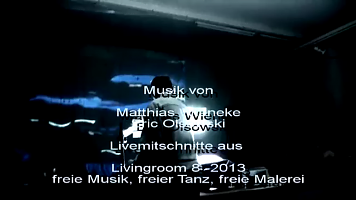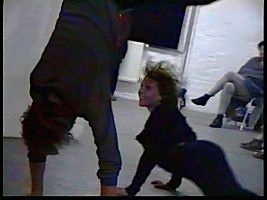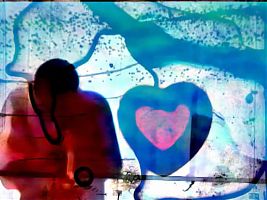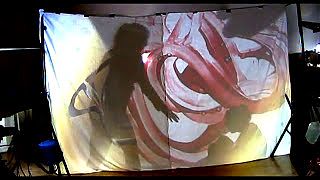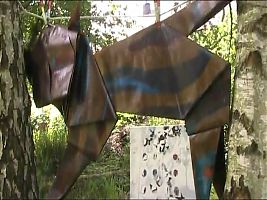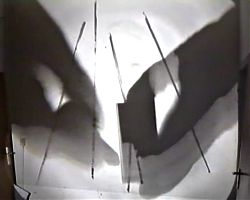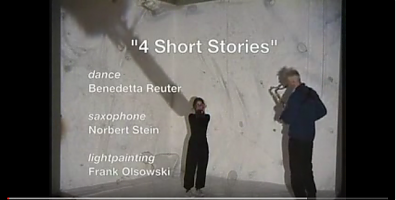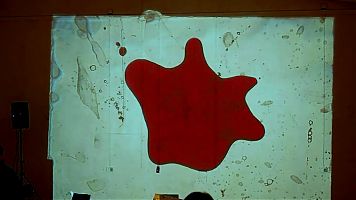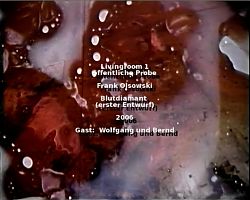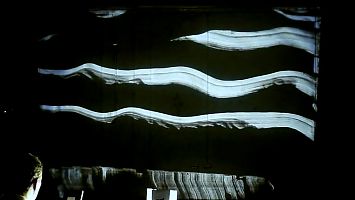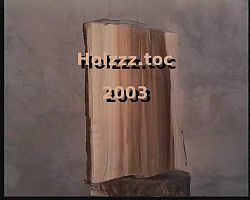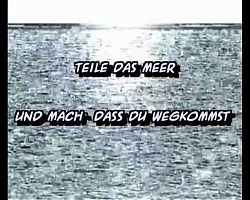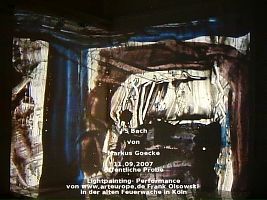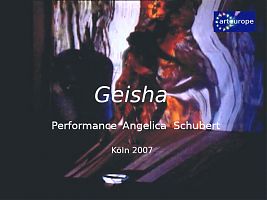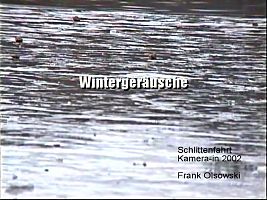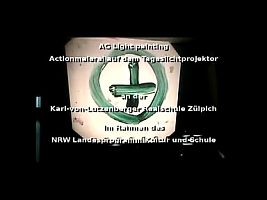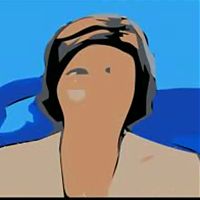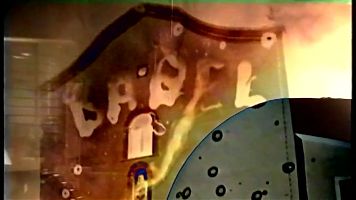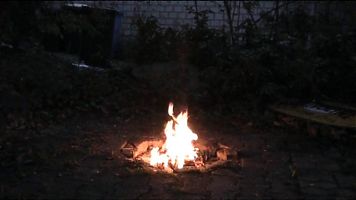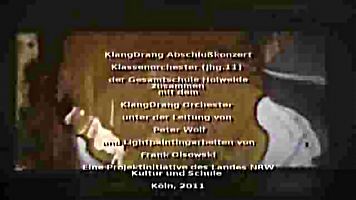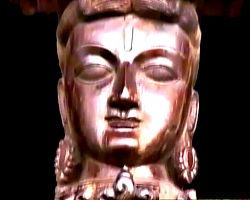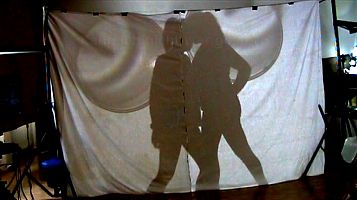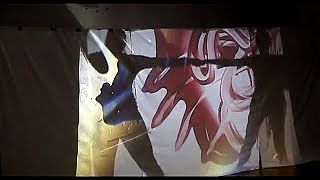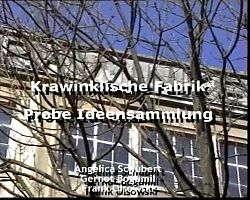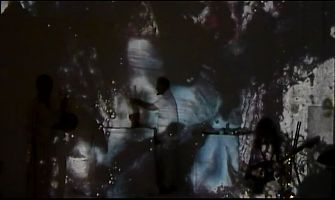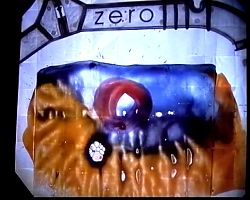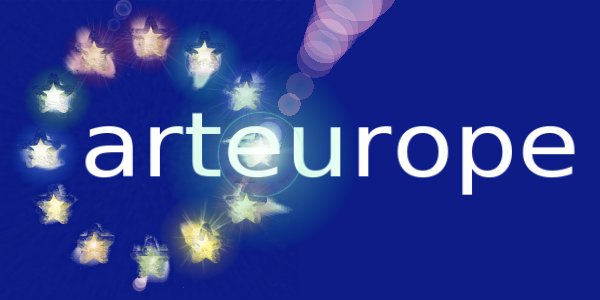Random Hall Performance
Datum
Performance appearance Intro
with a camerawoman and 2 viewers
8 Lot für nichts, ein Performanceabend in einer Fabrikhalle, 1996
The idea for this performance originated in 1995 and was spontaneously premiered in 1996. It was a wet late winter day, and I anticipated that few spectators would attend. Indeed, a couple newly in love arrived—and that was it.
The performance 8 Lot utilizes stock market terminology from futures trading to describe the prospects of the impossible in our lives and on Earth, thereby going short.
That was simply not an issue for the naive, dreamy Düsseldorf-Cologne art scene, which constantly looked to America and knew how to completely separate such things. “Stock market traders buy art, although the good ones are only on Wall Street, okay, a few are also in the City of London, but it’s clear that we don’t make these people the subject of art—Mr. Olsowski, we’ll end up talking about money.” I was simply no longer consistent enough to cause anything inevitably registrable on the Richter scale – at least that’s my conclusion from that time.
Artistically speaking, however, it was groundbreaking for me. Please don’t forget that all of this flowed out of me spontaneously; I don’t learn texts in advance, or make things up, nor do I paint something rehearsed. What I want to find in rehearsals are concepts, frameworks on which fresh ideas can swing. That’s why I quite like this short intro – unfortunately, there were some technical difficulties with sound and image recording, so only fragments of this overhead projector performance remain.
The Daily News
Datum
Animation
The daily project “Tagesschau” was a spontaneous idea of mine to make film images (frames) infinitely scalable using Scalable Vector Graphics (SVG). When the script was finished, the Tagesschau news program was on. It must have been 8:15 p.m. Central European Time.
Using the open source program ffmpeg, I combined the frames converted to SVG format and edited the clip with cinerlerra, the professional Linux editing program. I put the scenes together for the animation and sent everything to my brother Eric. It took less than two hours for him to send me back the soundtrack, which matched the images perfectly.
The animated film “Die Tagesschau” points out that politicians never provide us with solutions to problems. If you let them do their thing, everything will eventually blow up in your face. If you want change, start with yourself, and if you are successful (in every respect), you will automatically influence your environment. Politicians recognize and pick up on such trends in order to get elected and enjoy a carefree life from then on. This takes work, which is why they prefer the population to remain rigid, unable to come up with their own ideas and thus create trends. But this leads to politicians doing or not doing whatever suits them, which makes everything worse, more precarious, and ultimately blows everything up, which doesn’t bother top politicians much because they are not affected by it at all.
Conclusion: The population must tell them what to do, never the other way around.
Conducting and Lightpainting
Datum
KlangDrang Festival
Excerpt from the final concert with Peter Wolf as conductor and his music project students from grade 11 at Holweide Comprehensive School, light paintings by franki, 2011
← Älter Neuer →
